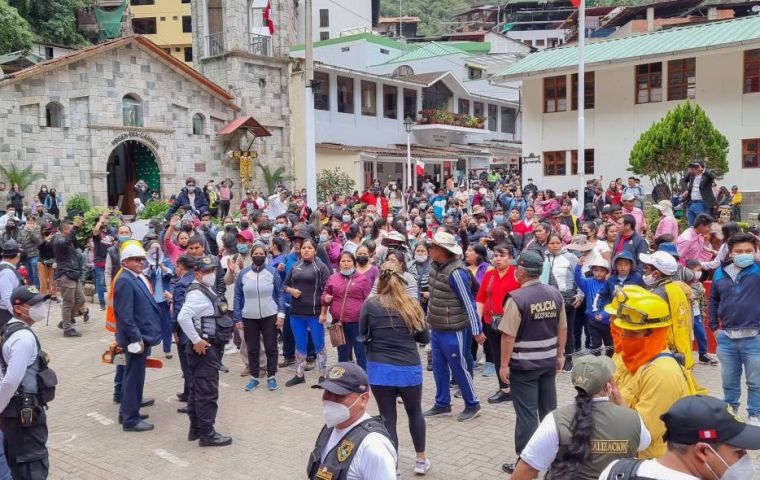MercoPress. South Atlantic News Agency
Machu Picchu increases capacity to appease angry tourists
 Tourists had blocked the railway to protest the lack of tickets to visit the iconic Inca citadel
Tourists had blocked the railway to protest the lack of tickets to visit the iconic Inca citadel Operators at the Machu Picchu Inca citadel in Peru have agreed to increase the site's capacity from 4,000 to slightly over 5,000 tourists after protests from would-be travelers, it was announced Thursday.
”The Machu Picchu Management Unit (UGM) agreed to increase the capacity to enter the Llaqta (citadel) of Machu Picchu to 5,044 people per day,“ said a statement from the local City Council.
”This decision was taken in order to meet, exceptionally, the demand of visitors who have come to the district of Machu Picchu for national holidays and high season, which has exceeded the maximum number allowed per day, which was 4,044 people,” added the UGM.
Ministry of Culture authorities had announced tickets had been sold out until August 19 and tourists from Spain, Colombia, Chile, and France among other parts of the world staged a protest Wednesday which went as far as to block the railway connecting Cusco with the citadel in the middle of the Andes.
Meanwhile, the International Council on Monuments and Sites (Icomos) warned Peru in a statement “not to give in to pressures or opinions without technical support to increase the capacity of the Inca citadel”.
Unesco declared Machu Picchu a World Heritage Site in 1983. Since then, the organization requires Peru to comply with a series of guidelines to preserve the site.
In 2019, Machu Picchu (or Young Mountain in native language) welcomed 1.5 million visitors, against around 400,000 in the first semester of 2022.
A ticket to enter Machu Picchu sells for US$ 40 to foreign visitors and US$ 16 for Peruvian nationals.
The archaeological site is 110 km from Cusco, the ancient capital of the Inca empire, and was built in the 15th century by Emperor Pachacutec.




Top Comments
Disclaimer & comment rulesCommenting for this story is now closed.
If you have a Facebook account, become a fan and comment on our Facebook Page!